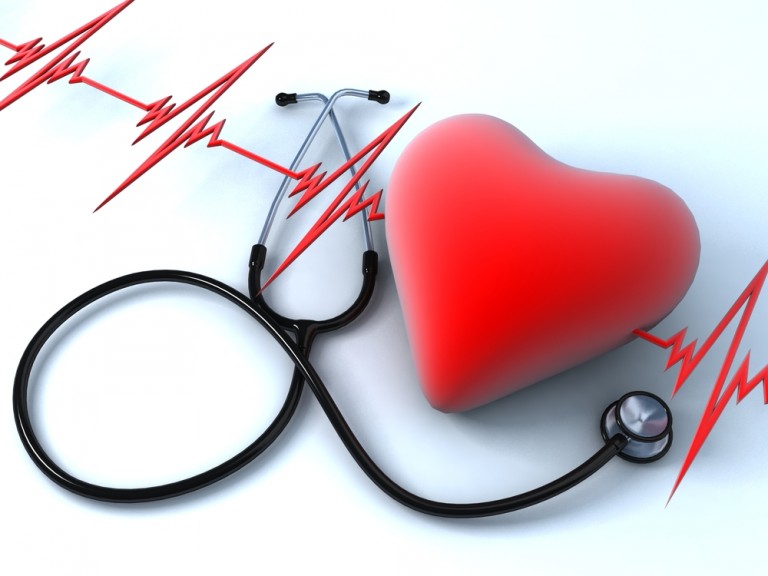
Hearts fill our Februaries, and not just because Valentine’s Day is around the corner. February is also the month when the spotlight shines brightly on heart health as campaigns to raise awareness of cardiovascular diseases and promote heart-healthy living are featured around the globe.
Cardiovascular diseases are diseases that affect the heart and circulatory system and, according to the World Health Organization, they cause more deaths annually than any other disease worldwide. While there are many diseases that affect heart health, three of them – coronary artery disease, high blood pressure, and cardiomyopathy – are described below.
Coronary Artery Disease
Coronary artery disease is the most common form of heart disease in the United States and is caused by plaque buildup in the walls of the arteries. The arteries supply the heart with oxygen-rich blood. As the plaque, which is comprised of cholesterol and other substances, accumulates over time, it restricts the passage of blood (and therefore oxygen) through the arteries. This is a problem because a person can suffer a heart attack if the heart is deprived of the oxygen it needs.
Even if a heart attack does not occur, coronary artery disease can damage the heart and lead to other health conditions, such as an irregular heartbeat (also known as arrhythmia), and even heart failure, which happens when the heart is unable to effectively pump blood through the body.
High Blood Pressure
High blood pressure, or hypertension, is a common cardiovascular condition, with more than 3 million new cases per year recorded in the United States. When a person has high blood pressure, it means that their heart is working overtime to supply the body with the oxygen-rich blood it needs. The heart may need to exert more energy for a variety of reasons, including plaque buildup, genetic factors, and certain prescription medications.
High blood pressure can go undetected for years, causing further damage to the heart and arteries over time. If it is uncontrolled, high blood pressure and the damaged arteries it creates can lead to a variety of other health problems, such as organ and tissue damage, heart attack, and stroke.
Cardiomyopathy
Less common than high blood pressure, but still garnering 200,000 new cases per year in the United States, cardiomyopathy refers to a disease of the heart muscle itself. Cardiomyopathy causes the heart muscle to become enlarged or rigid, or in rare cases, causes scar tissue to replace heart muscle tissue. This damage weakens the heart and makes it difficult to pump blood effectively and maintain a steady rhythm, which can lead to heart failure and arrhythmia.
Cardiomyopathy can either be genetically inherited or acquired, meaning a person can either be born with it or develop it over time for one reason or another. There are multiple types of cardiomyopathy and the severity of the disease differs widely from person to person.
Improving Heart Health & Reducing Your Risk
Fortunately, it is possible to protect heart health and reduce your risk of developing or worsening one of these heart diseases. Some key elements of reducing your risk of heart disease and/or managing conditions like those described above include:
- Eating a diet rich in fruits, vegetables, and whole grains
- Avoiding food with added sugar and salt
- Enjoying lean meats, fish, beans, and nuts
- Being physically active
- Not smoking and avoiding secondhand smoke
- Getting regular health checks, even when you feel healthy
As always, speak with a trusted healthcare provider if you are concerned about your heart health, think you should be tested for a specific condition, or if you have any other health concern.
So, as we exchange heart-shaped tokens of affection with our loved ones this February, let’s remember our own hearts and show them some love as well.
Like what you see? Sign up to join Human Health Project, a community-based, not-for-profit website focused on using peer-to-peer health support for a healthier you.
References & Further Reading
Coronary Artery Disease. https://www.nlm.nih.gov/medlineplus/coronaryarterydisease.html
Coronary Artery Disease (CAD). http://www.cdc.gov/heartdisease/coronary_ad.htm
Cardiovascular Diseases (CVD). http://www.who.int/mediacentre/factsheets/fs317/en/
High Blood Pressure (hypertension). http://www.mayoclinic.org/diseases-conditions/high-blood-pressure/basics/definition/con-20019580
How to Prevent Heart Disease -At Any Age. http://www.heart.org/HEARTORG/HealthyLiving/How-to-Help-Prevent-Heart-Disease—At-Any-Age_UCM_442925_Article.jsp#.Vrf28fkrK01
Prevention and Treatment of Cardiomyopathy. http://www.heart.org/HEARTORG/Conditions/More/Cardiomyopathy/Prevention-and-Treatment-of-Cardiomyopathy_UCM_444176_Article.jsp#.VrKq8PkrK00





I began feeling what could be considered indigestion, I took 2 tums but it persisted, I then began feeling generally “achy” in my upper back and upper arms, with constant chest pains. I had two heart attacks that year, finally i was diagnosed of Coronary Artery Disease (CAD), my Cardiologist ordered an angioplasty and discovered a closed artery, then another cardiologist was called in to place a stent in the artery to open it up. I was hospitalized for a total of 2 weeks. I was prescribed Effient, a blood thinner and two other medications. My condition improved but got worse again within a year, so i started on a natural CORONARY ARTERY DISEASE TREATMENT from Rich Herbs Foundation, the herbal treatment was wonderful, no attack since treatment. I had a total decline in symptoms. Visit ww w. richherbsfoundation. c om. I do lots of walking. Lost some weight, but was never heavy. Eat differently. I feel good overall.